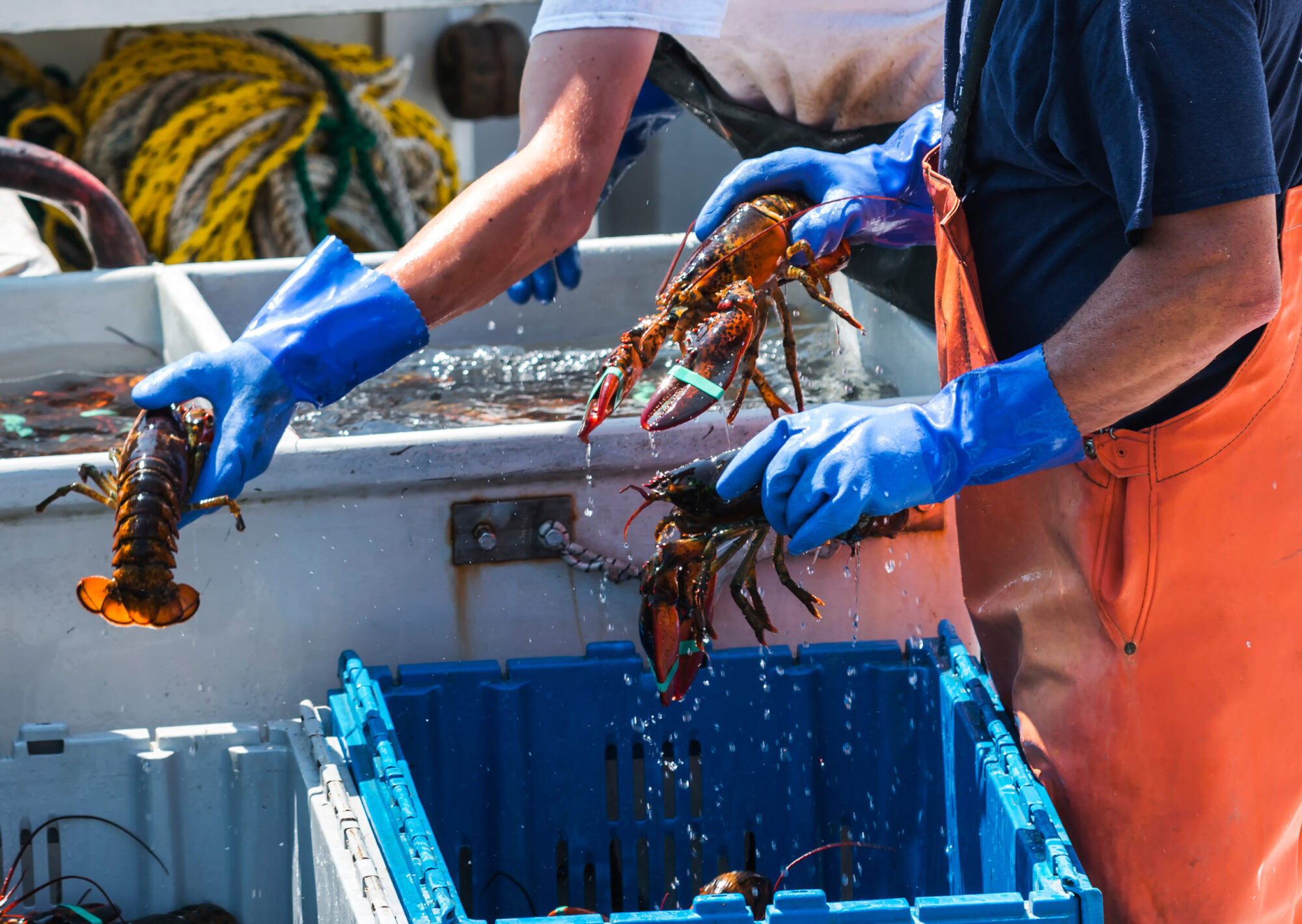
New Report Charts Course towards an Electric Future for Nova Scotia’s Lobster Fleet
September 21, 2023
HALIFAX—A new report from Oceans North shows that Nova Scotia’s lobster fishery is positioned to lead the way towards zero-emission fishing. The study assessed the Nova Scotia lobster fleet and found that, based on workloads and movement patterns, over 2000 boats were prime candidates for commercially available battery-electric propulsion systems.
“Despite being on the front lines of climate change, fisheries have not been as high a priority as other sectors when it comes to climate and innovation planning,”
– Brent Dancey, Director of Marine Climate Action at Oceans North.
“However, the switch to battery-electric lobster fishing vessels could place this culturally and economically important fishery on a trajectory to meet the country’s net-zero-by-2050 emissions targets while providing savings on fuel and maintenance for fishers.”
Fishing for crustaceans such as lobster is more fuel intensive than most other fisheries, meaning higher emissions and higher costs. The Nova Scotia lobster fleet produces the equivalent of roughly 82 million kilograms of CO2 each year, which is between 16–35,000 cars’ worth of emissions. But the study found many vessels remain within 20 kilometres of shore—well within the range of battery-electric systems. Converting these vessels to electric propulsion would reduce the fleet’s total emissions by over 60 percent.
Decarbonizing the lobster fishery is also part of a broader opportunity to reduce emissions across marine industries. “The electrification of work boats and harbour craft is a key area for the adoption of zero-emission technologies,” says Rob Crutcher, President and Naval Architect at Allswater, which led the report’s project team. “Electrifying the lobster fishery is the tip of the iceberg for the benefits that can be realized in Nova Scotia.”
In addition to its emissions analysis, the report discusses how adopting zero-emission technologies could position the province as an innovator in the maritime energy transition, providing economic advantages as well as environmental ones. “The Nova Scotia Boatbuilders Association is excited by the work done in this report,” says Jan Fullerton, the Association’s Executive Director. “Gaining clarity around the market-readiness of leading net-zero solutions, the comparative costs, and the opportunities for the boatbuilding industry is essential to move forward. We’re also pleased to see specific recommendations to help realize the benefits for our industry and the environment.”
These recommendations include advice for policymakers, who will play an essential role in the fishery’s future. “Getting to zero emissions won’t be possible without government support to lower up-front costs and tip the scales on widespread adoption of battery-electric technology and infrastructure,” Dancey explains. “Canada needs to show its commitment to marine climate action by expanding its existing decarbonization programs to include all marine sectors. The commercial fishery should also be included in Canada’s upcoming Marine Decarbonization Plan.”
In addition to Allswater, the report project team included specialized expertise from Rimot, Net Zero Atlantic, the Renewable Energy Storage Lab at Dalhousie University, the Nova Scotia Community College, Kempy Energetics, Redrock Power Systems, the Nova Scotia Boatbuilders Association, and Membertou Fisheries.
For more information or to arrange an interview, please contact:
Alex Tesar
Communications Manager, Oceans North
[email protected]
Correction: A previous version of this release stated that the 82 million kilograms of CO2 emitted by Nova Scotia’s lobster fleet was equivalent to about 35,000 cars. This number is highly dependent on kilometres travelled and the country being examined. The updated number of 16–35,000 more accurately reflects the potential range.
